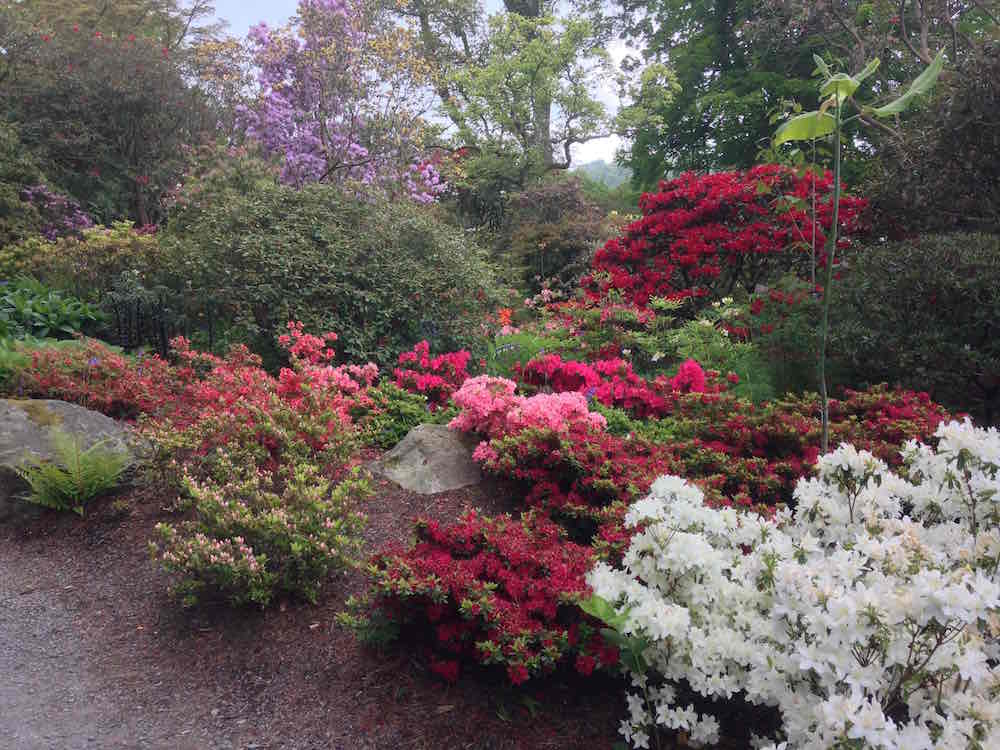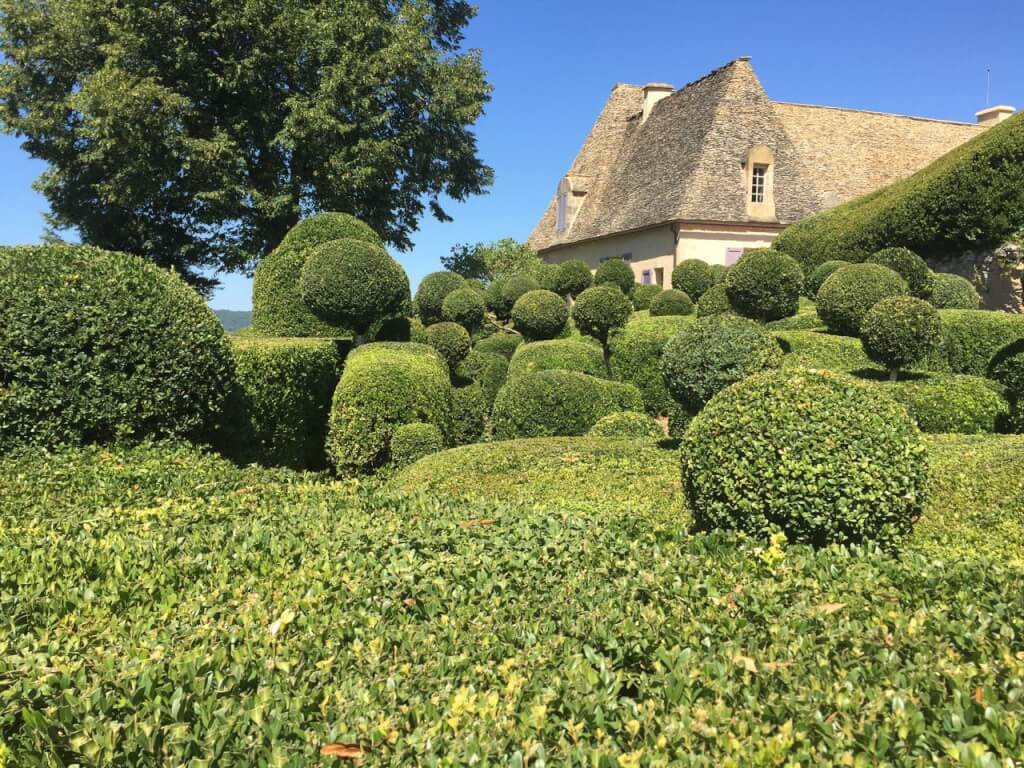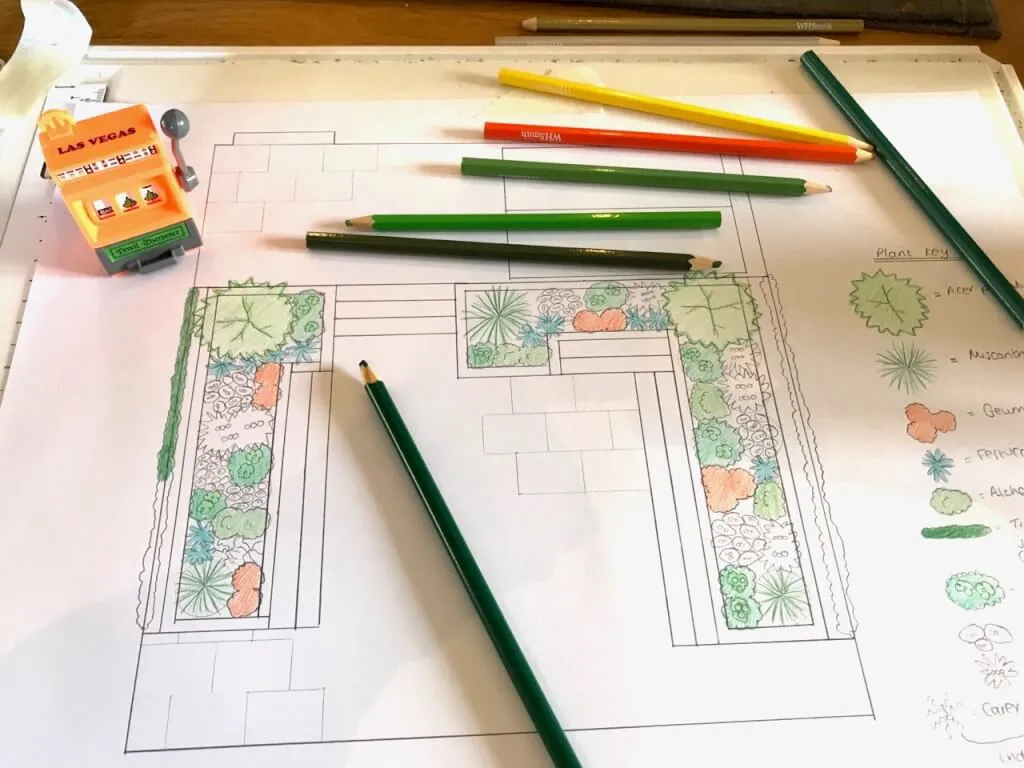Bodnant gardens
 Lee Burkhill: Award Winning Designer & BBC 1's Garden Rescue Presenters Official Blog
Lee Burkhill: Award Winning Designer & BBC 1's Garden Rescue Presenters Official Blog

You can definitely tell that spring is on its way out and summer is ready to explode into life, and that's especially prevalent at Bodnant Gardens this year. It's one of the main attractions for plant lovers in Wales and has a romance that can't be ignored. If you want to see some classic examples of formal and informal design and planting, then Bodnant garden is the place to go.
I visited Bodnant Garden, based in Conwy Valley in Wales, this week to see their staggering array of Rhododendrons, Camellias, Azaleas and other acid soil loving shrubs. Bodnant Gardens was founded in 1874 and has some 80 acres of gardens and hillside horticulture based in Snowdonia National Park. Having an established Rhododendron border myself I was eager to see some of their prize specimens and get some ideas of further developing my love of ericaceous loving plants!

Sadly Bodnant Gardens famous Laburnum arch, Laburnum x watereri 'Vossii', had yet to flower, probably due to some of the recent erratic weather conditions from hot to cold. I remember my Grandad having Laburnum trees that used to arch over his driveway. Their bold bright yellow hanging flowers are simply incredible. That said the remaining garden attractions were all in full bloom and just as fantastic. When the laburnum is in flower it creates a long covered arch with the pendulous flowers dangling, an amazing site.
Bodnant gardens are renowned for their acidic loving plant selection. If you have an acidic PH in your garden, ie 6 and below, then ericaceous loving plants will thrive. That said even a neutral or alkaline soil can be prepped to happily accommodate a Rhododendron or Azalea with sulphurous materials. We have a guide on how to test and change your soil PH here. If your soil is below 6ph, ideally 5-6.5ph, then these kinds of plants will quite happily grow well. I believe that any garden can incorporate these plants with the right preparation and the Rhododendron family of plants are truly spectacular in the spring adding both colour and structure to a garden.

Bodnant Gardens has a mix of both formal and some informal styles. The terraces, rose garden, pin mill and canal terrace are all very formal and reminiscent of the Edwardian era. A plethora of Roses, Wisteria floribunda 'Alba' and masses of Allium hollandicum 'Purple Sensation' to name a few. The walkway down to the dell and skating pond are very much informal and more free-form planting in drifts rather than blocks.
Here are the 4 main areas of Bodnant garden that simply can't be missed. You could easily spend the entire day here, and why not. There's a tea room near the dell, so don't worry about keeping your cream tea ratio up!
As you enter the gardens main entrance take a sharp left and follow the path round to the Laburnum arch, there's little I can say about this incredible feature, it's best to go when it's in flower and just experience it!
These areas are much more relaxed in both their planting layouts and choices. Relaxed drifts of Hostas, Euphobia, Astilbes and a mass of Primulas make up some of the most exciting and natural-looking schemes I've seen. This is probably due to the humongous scale of Bodnant Gardens, some borders and drifts are bigger than most houses! It really is a treat to be able to see both styles in one garden. Even given the scale of the planting these schemes the styles are still applicable to smaller garden design. The potential to recreate a woodland dell in your back garden is something that can be achieved even in the smallest of gardens.
Which overlooks the lily pond and showcases an incredible restraint shown in formal styles. Clean lines and the huge formal pond looking out over the rolling hillside are a must. You can get the view from the pond level or walk up the steps near the house to get the overview from the hall. Both of which use borrowed views of the countryside.
Again, these showcase the use of a wide canal leading to the mill building with formal symmetry. Perfectly symmetrical it draws your eye from the canal to the structure allowing on a calm day for the reflection to mirror in the water. Luckily there's a handy bench you can sit on and take in the view. If you look to the left you can see the scrambling rose garden and pergolas. Just fantastic!
One of the benefits of the layout in Bodnant is the creation of Micro-climates. Microclimates offer a slight change in the climate or temperature of an area or garden. Even a couple of degrees change in temperature can allow plants the thrive that would usually struggle. This is especially true in Bodnant Gardens with some of the Italianate terraces along with the trees that envelope the plot shelter the plants from prevailing winds and frost pockets. Some of the more tender plants near the main house and North garden thrive in this microclimate.
Microclimates are not just found in vast plots of land or large gardens but affect even a modest city garden too. Slopes and walls that may be in the shade are a prime spot for frost pockets, which can impact the plants you would want to plant there. It's always best to pay attention to any microclimates, such as wind tunnels in your garden.
1872: Original Mansion Built
1874: Estate bought by Henry Davis Pochin who built the Dell
1904-14: Grounds terraces near the mansion are constructed
1939: Pin Mill is relocated at Bodnant Gardens
1949: The National Trust accepts Bodnant Gardens as their second trust garden.
1981: Severe winter damages the garden
2014: 100 years since the terraces were completed.
2015: New skating lake area open to the public in the Dell.
Whether you have acres or mere feet of garden space you can still take some of the garden design styles from a garden like Bodnant and apply them to your own. Maybe using Rhododendrons as small trees to sculpt a garden into an informal woodland style, alternatively mixing the Azaleas with Acers to create a Japanese feel with restraint and gravel borders.
Using herbaceous perennials such as Hostas, Trilliums and Helleborus can give that woodland style, that Bodnant does so well on the way to the dell.
Garden Ninja can design the conditions that acidic plants such as Camellias and Azaleas need and work this into garden design for you. Whether it be a large or small garden Garden Ninja can create something truly fantastic for you with complimentary planting schemes that show off the very best of ericaceous plants.
Have you used a borrowed view in your garden? If so why not Tweet, Facebook or Instagram me with your pictures! You can also follow me on Youtube where I’ve got plenty of garden guide vlogs.






JOIN THE NINJAS

Be the first in line for new Guides, Discount codes and Offers